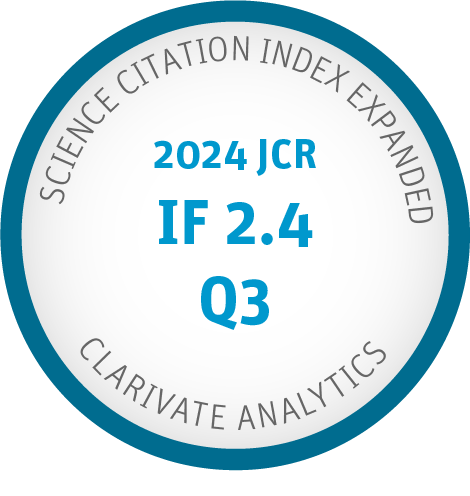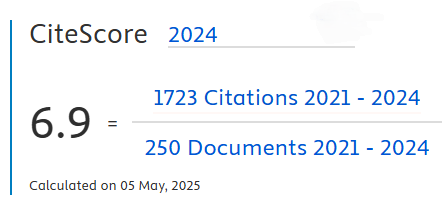A 2D Clustering Based Hotspot Identification Approach for Spatio-Temporal Crime Prediction
DOI:
https://doi.org/10.9781/ijimai.2024.10.001Keywords:
2-D Hotspot Analysis, Crime Prediction, Forensics, Predictive Policing, Spatial, Temporal ClusteringAbstract
This research introduces a method for predicting where crimes will occur based on clustering activity in the area. Hotspots, or locations with a disproportionately high number of crimes, are located by a combination of spatial and temporal grouping methods employed by this strategy. Crime forecasting models use these hotspots to predict where crimes will occur. The approach's efficacy is tested using actual crime data, and it successfully predicts future crimes in high-crime zones. Law enforcement agencies can use the proposed method to protect the public better, and it shows promise as a tool for crime prediction. Academic research into the topic of foreseeing criminal behavior is a newer development. Researchers in this discipline have discovered that criminal behavior has universal patterns. These patterns may help law enforcement agencies plan for criminal activities. Predictive policing, hotspot analysis, and geographical profiling are examples of when crime forecasting has been useful. Several aspects of the census, such as the average yearly income and literacy rate, are related to the prevalence of crime in a certain area. Indicators of potentially criminal behavior, these characteristics may be seen as markers. This investigation aims to discover if any clues can be gleaned from past criminal behavior that may be utilized to forecast future criminal behavior. Using machine learning and 2-D Hotspot analysis, we propose a method for the spatiotemporal prediction of criminal activity within the scope of this study. Clustering is a method used in 2-dimensional hotspot analysis. Methods of modern categorization, both with and without hotspot analysis, are used to evaluate the suggested model's efficacy. It is found that the model that incorporates hotspot analysis performs better than the one that does not.
Downloads
References
M.-S. Baek, W. Park, J. Park, K.-H. Jang, and Y.-T. Lee, “Smart policing technique with crime type and risk score prediction based on machine learning for early awareness of risk situation,” IEEE Access, vol. 9, pp. 131906-131915, 2021.
M. Khan, A. Ali, and Y. Alharbi, “Predicting and preventing crime: a crime prediction model using san francisco crime data by classification techniques,” Complexity, vol. 2022, p. 4830411, 2022.
X. Wang, M. S. Gerber, and D. E. Brown, “Automatic crime prediction using events extracted from twitter posts,” in International conference on social computing, behavioral-cultural modeling, and prediction, 2012, pp. 231-238.
F. K. Bappee, “Prediction of Crime Occurrences: A data-driven approach for single domain and cross-domain learning,” 2020. http://hdl.handle.net/10222/80092
A. Almaw and K. Kadam, “Survey paper on crime prediction using ensemble approach,” International Journal of Pure and Applied Mathematics, vol. 118, pp. 133-139, 2018.
M. David, E. S. Mbabazi, J. Nakatumba-Nabende, and G. Marvin, “Crime Forecasting using Interpretable Regression Techniques,” in 2023 7th International Conference on Trends in Electronics and Informatics (ICOEI), 2023, pp. 1405-1411.
U. M. Butt, S. Letchmunan, F. H. Hassan, M. Ali, A. Baqir, and H. H. R. Sherazi, “Spatio-temporal crime hotspot detection and prediction: a systematic literature review,” IEEE access, vol. 8, pp. 166553-166574, 2020.
G. Hajela, M. Chawla, and A. Rasool, “A clustering based hotspot identification approach for crime prediction,” Procedia Computer Science, vol. 167, pp. 1462-1470, 2020.
G. Hajela, M. Chawla, and A. Rasool, “Crime hotspot prediction based on dynamic spatial analysis,” ETRI Journal, vol. 43, pp. 1058-1080, 2021.
E. G. Badreddine, H. Larbi, A. Houda, and R. Mohammed, “SpatioTemporal Crime Forecasting: Approaches, Datasets, and Comparative Study,” in International Conference on Advanced Intelligent Systems for Sustainable Development, 2022, pp. 231-251.
S. S. May, O. E. Isafiade, and O. O. Ajayi, “Hybridizing extremely randomized trees with bootstrap aggregation for crime prediction,” in Proceedings of the 2021 4th International Conference on Artificial Intelligence and Pattern Recognition, 2021, pp. 536-541.
K. Kianmehr and R. Alhajj, “Effectiveness of support vector machine for crime hot-spots prediction,” Applied Artificial Intelligence, vol. 22, pp. 433- 458, 2008.
A. Jan and G. M. Khan, “Real world anomalous scene detection and classification using multilayer deep neural networks,” , vol. 8, no. 2, pp. 158–167, 2023.
P. Pawale, S. Bagal, S. Ajabe, and K. Shikalagar, “GEO STATISTICAL APPROCH FOR CRIME HOTSPOT DETECTION AND PREDICTION,” International Research Journal of Engineering and Technology, Vol: 04 Issue: 05, pp, 2703-2706, 2017.
S. Das and M. R. Choudhury, “A geo-statistical approach for crime hot spot prediction,” International Journal of Criminology and Sociological Theory, vol. 9, no. 1, pp. 1–11, 2016.
S. B. Mehta and R. D. Doshi, “Automatic clustering crime region prediction model using statistical method in data mining,” International Journal of Engineering Research And, vol. 9, pp. 697-703, 2020.
M. Boukabous and M. Azizi, “Image and video-based crime prediction using object detection and deep learning,” Bulletin of Electrical Engineering and Informatics, vol. 12, pp. 1630-1638, 2023.
M. Kamruzzaman, “New opportunities, challenges, and applications of edge-AI for connected healthcare in smart cities,” in 2021 IEEE Globecom Workshops (GC Wkshps), 2021, pp. 1-6. doi: 10.1109/ GCWkshps52748.2021.9682055.
A. McMorrow, “Spatiotemporal forecasts of London’s crime hotspots,” Dublin, National College of Ireland, 2022.
Y. Hu, F. Wang, C. Guin, and H. Zhu, “A spatio-temporal kernel density estimation framework for predictive crime hotspot mapping and evaluation,” Applied geography, vol. 99, pp. 89-97, 2018.
N. Abdulrahman and W. Abedalkhader, “KNN classifier and Naive Bayse classifier for crime prediction in San Francisco context,” International Journal of Database Management Systems, vol. 9, pp. 1-9, 2017.
A. A. Hussein, “Identifying Crime Hotspot: Evaluating the suitability of Supervised and Unsupervised Machine learning,” Master’s thesis, University of Cincinnati, 2021.
Y. Zhuang, M. Almeida, M. Morabito, and W. Ding, “Crime hot spot forecasting: A recurrent model with spatial and temporal information,” in 2017 IEEE International Conference on Big Knowledge (ICBK), 2017, pp. 143-150.
S. S. Kshatri, D. Bhonsle, R. Verma, A. G. Pillai, and V. Moyal, “Crime Detection Approach Using Big Data Analytics and Machine Learning,” NeuroQuantology, vol. 20, p. 1480, 2022.
Y. Lee and S. O, “Flag and boost theories for hot spot forecasting: An application of NIJ’s Real-Time Crime forecasting algorithm using Colorado Springs crime data,” International journal of police science & management, vol. 22, pp. 4-15, 2020.
A. F. Mohammed and W. R. Baiee, “Analysis of criminal spatial events in GIS for predicting hotspots,” in IOP conference series: materials science and engineering, 2020, p. 032071.
M. N. Khan, H. U. Rahman, T. Hussain, B. Yang, and S. M. Qaisar, “Enabling Trust in Automotive IoT: Lightweight Mutual Authentication Scheme for Electronic Connected Devices in Internet of Things,” IEEE Transactions on Consumer Electronics, 2024.
M. Qasim Gandapur and E. Verdú, “ConvGRU-CNN: Spatiotemporal deep learning for real-world anomaly detection in video surveillance system,” vol. 8, nº 4, 2023. https://doi.org/10.9781/ijimai.2023.05.006
Z. He, R. Lai, Z. Wang, H. Liu, and M. Deng, “Comparative study of approaches for detecting crime hotspots with considering concentration and shape characteristics,” International journal of environmental research and public health, vol. 19, p. 14350, 2022.
K. Jenga, C. Catal, and G. Kar, “Machine learning in crime prediction,” Journal of Ambient Intelligence and Humanized Computing, vol. 14, pp. 2887-2913, 2023.
A. D. d. Araújo Júnior, “Predspot: predicting crime hotspots with machine learning,” Brasil, 2019. https://repositorio.ufrn.br/handle/123456789/29155
Downloads
Published
-
Abstract48
-
PDF24








